#Charles Roubaud
Explore tagged Tumblr posts
Text

Radical Software: Women, Art & Computing 1960-1991, Mudam Luxembourg – Musée d'Art Moderne Grand-Duc Jean / Kunsthalle Wien / Verlag der Buchhandlung Walther und Franz König, 2024
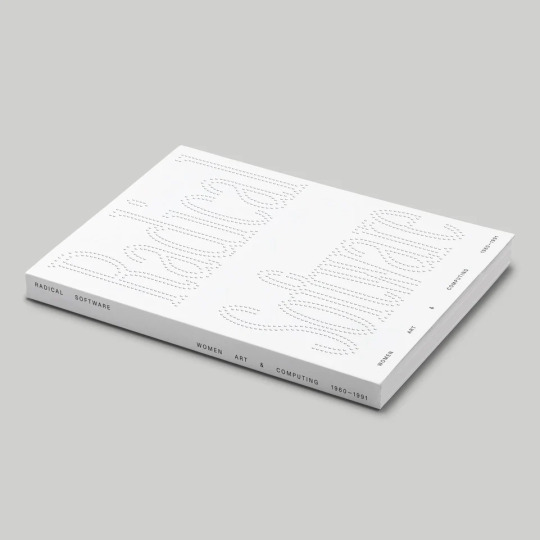
Artists: Rebecca Allen, Elena Asins, Colette Stuebe Bangert & Charles Jeffries Bangert, Gretchen Bender, Gudrun Bielz & Ruth Schnell, Dara Birnbaum, Inge Borchardt, Barbara Buckner, Doris Chase, Analívia Cordeiro, Betty Danon, Hanne Darboven, Bia Davou, Agnes Denes, VALIE EXPORT, Anna Bella Geiger, Isa Genzken, Dominique Gonzalez-Foerster, Lily Greenham, Samia Halaby, Barbara Hammer, Lynn Hershman Leeson, Grace C. Hertlein, Channa Horwitz, Irma Hünerfauth, Charlotte Johannesson, Alison Knowles, Beryl Korot, Katalin Ladik, Ruth Leavitt, Liliane Lijn, Vera Molnár, Monique Nahas & Hervé Huitric, Katherine Nash, Sonya Rapoport, Deborah Remington, Sylvia Roubaud, Miriam Schapiro, Lillian Schwartz, Sonia Sheridan, Nina Sobell, Barbara T. Smith, Tamiko Thiel, Rosemarie Trockel, Joan Truckenbrod, Anne-Mie Van Kerckhoven, Ulla Wiggen
Contributors: Laura Amann, Sarah Beaumont, Michelle Cotton, Rhea Dall, Ramona Heinlein, Hannah Marynissen, Astrid Peterle, Carlotta Pierleoni, Andrea Popelka, Clémentine Proby, Tina Rivers Ryan, Margit Rosen, Jade Saber, Bettina Steinbrügge
Graphic Design: A Practice For Everyday Life
Exhibitions: Mudam Luxembourg – Musée d'Art Moderne Grand-Duc Jean, September 20, 2024 – February 2, 2025; Kunsthalle Wien, Wien, February 28 – May 25, 2025
Curators: Michelle Cotton, assisted by Sarah Beaumont
#graphic design#art#computer art#computer drawing#computer technology#exhibition#catalogue#catalog#cover#michelle cotton#sarah beaumont#a practice for everyday life#mudam luxembourg#musée d'art moderne grand duc jean#kunsthalle wien#verlag der buchhandlung walther und franz könig#2020s
47 notes
·
View notes
Text
Acts of Translation
Late in February 2021, I was walking through the Long Island Pine Barrens, along the beginning of the Paumanok Trail. The snow-covered path was marked by the patterned boot tracks of other hikers (only two or three at the most) and the cloven hoof-marks of deer. The sky above the trees was pale blue, tinged with gray. The air was cool, crisp, dry. With each step, my boots compacted the icy slush and sometimes my boot would shift, sliding on the heavy, dense snowpack so that I’d have to compensate with a movement of my upper body and arms to keep my balance and to prevent myself from slipping.
The fourth branch of Jacques Roubaud’s ���the great fire of London”, a volume called Poésie: (récit) — I prefer the French title since Poetry: (a story) is less poetic and loses a sense of meaning that I think should be there, poésie to my ear implies a movement that is lost in the more static English word, poetry, and récit (and perhaps this is peculiar to me and has nothing to do with actual French) suggests narration closer to that when a storyteller speaks to a listener who receives the récit and so completes the action, a story doesn’t necessarily require a reader — begins with the Narrator (Roubaud) moving through space, in this case, the space is urban, the streets Paris.
Early in December 1994, I was walking in Paris. The sky was gray, low, the air humid, warm.
For walking in Paris, I wear a blue K-way jacket, and a cap, also blue. The K-way was a gift, not something I’d picked out. It was light, blue, waterproof, costly.
For walking in the woods, I wear an olive green jacket made by Patagonia that zips up the front and has a little pocket over the left breast where I can store my phone for easy access. Around my neck, I wear my “Doctor Who scarf” knitted by my mother. (The scarf isn’t a replica of any of the long scarves worn by the Fourth Doctor, played by actor Tom Baker, but a spirited recreation of the sort that anyone familiar with the various scarves featured in Season 12 through 17 of the TV show would immediately recognize.) On my head I wear a black bowler hat I purchased at the museum shop of the San Francisco Museum of Modern Art in 2018 when I took my mother and son to the Magritte exhibit. (The next summer, I would take my wife and son to Brussels to tour the permanent Magritte exhibit at the Musée de Beaux Arts. The study of Magritte’s art and writing is a principal concern of my Project.) The clerk at the shop said this style of bowler hat is the exact same one worn by René Magritte when he was alive. So it should be no surprise that I’m pleased with it and wear it every opportunity I get, and especially when I’m out on my daily walk.
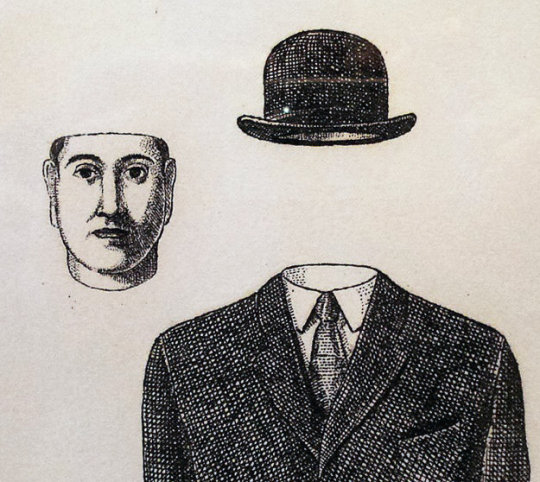
Before the pandemic, I walked every afternoon through the pine barrens. This was easy enough since the office where I perform my paid work (not at all literary) is located in the middle of the pine barrens. There are a network of trails that lead through the woods that are immediately accessible from the back door of the building where I work. A year ago, my office was closed, so that I now work from home. Now my afternoon walks (usually) are taken along the streets in the neighborhood where I live in the village of Long Neck. I’ve become a familiar sight in the neighborhood as the man in the bowler hat. My neighbors wave to me and sometimes will view my unusual headwear as an occasion for conversation. What kind of hat is that? asked one neighbor. Another fellow walker assumed I’m a fan of Stanley Kubrick’s adaptation of A Clockwork Orange, a novel by Anthony Burgess. I’m more a fan of the book than I am a fan of the movie, but my bowler hat is most deliberately a nod to Magritte and not to Alex and his three droogs. Throughout the pandemic, Magritte and his art has been my life line.
On his walks in Paris, Roubaud doesn’t wear a bowler — his cap is of a different sort.
I bought the cap in New York, at J.J. Hat Center, at the corner of Broadway and 42nd Street. It’s a hat made in Scotland and the salesperson assured me that it was the same exact style of cap worn by Sean Connery in the film The Untouchables. It’s no surprise that I’m happy with it.
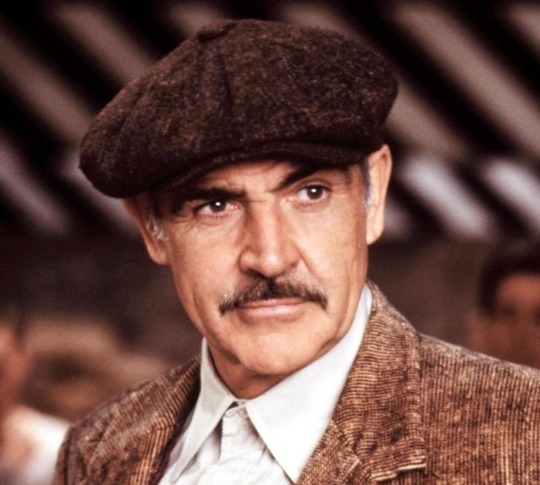
After I’m vaccinated and I feel like taking the Long Island Rail Road to Penn Station again, maybe I’ll go to the J.J. Hat Center myself and shop for a hat. Although according to “the internet” J.J. Hat Center is now located at 310 Fifth Ave (between 31st & 32nd), not far from Penn at all. If/when I do go in to the city, I’ll want to pay a visit to the Fountain Pen Hospital. A man can never have too many hats or too many fountain pens.
I could go along in this vein for quite some time, this leisurely stroll through Roubaud’s Poésie: (récit) allowing his text to guide my own thoughts, reveries, musings, etc. The resulting text would function as a companion text. I’m walking along with Roubaud in Paris as he moves from the National Library, past familiar restaurants, along familiar streets…
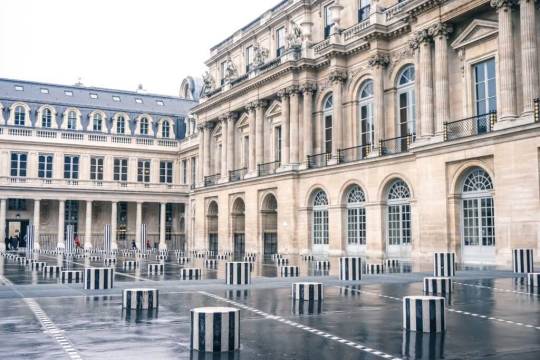
I passed between the tops or periscopes of the licorice icebergs of the Buren columns, making sure not to slip on their outgrowths/extensions [? the French word is excroissances, but it’s not obvious to me what these outgrowths or extensions might be], on the damp grills, slimy, soaped with crushed beige leaves. And I made it through with no accidents to Place Colette, on the right side of the Théâtre-Français. This route was well known to me.
...but Roubaud himself is not walking with me, only his text, or perhaps he is with me as an invented copy of an imaginary Roubaud that I carry within myself as I read and as I walk along the snow-covered Paumanok Trail thinking of his book, or books (one book in seven volumes called collectively “the great fire of London”).
I read the first two and a half branches (the first three volumes to be translated into English), starting with Branch One: Destruction in the fall of 2018. Without really intending to, I wrote a little book of jottings while reading Roubaud’s novel. I called my little book, In the Labyrinth of Forking Paths, since “the great fire of London” is “a story with interpolations and bifurcations” with actual links indicating different narrative paths the reader can take during their wandering reading. I was reminded (though only a little) of the choose-your-own-adventure books (published by Bantam) I read when I was a kid. One of my early attempts at writing fiction was a “literary” choose-your-own-adventure called (imaginatively enough) Into the Labyrinth (a slight variation on a title of one of Alain Robbe-Grillet’s novels, Dans le labyrinthe, with whose hyper-descriptive nouveau roman style I’d become bewitched, a style ideally suited to such text adventures). (I published my Into the Labyrinth as an interactive fiction designed for a media platform that worked only on those early generation iPods. I have no idea if anyone ever read/played my interactive fiction even though according to the app, mine was the most downloaded story. It was certainly the longest.) I won’t claim that I have been waiting for the remaining four volumes to be translated into English. In fact, I felt a certain level of contentment with the artificial truncation of the novel — I had read all that I could, all that was available in English, so now I could move on to other things, like reading the works of Miklós Szentkuthy. Procuring and reading the rest of “the great fire of London” wasn’t a tempting prospect until Anthony, author of the blog, Time’s Flow, mentioned that he’d purchased the remaining volumes in French and would be making an attempt to read them. That was all it took. If Anthony was going to do it, then so would I. I ordered copies from a bookseller in France and they arrived last Friday in the post. So when did I get the idea to translate these remaining four volumes into English myself? Was it a serious idea or just another of my fanciful projects? Project 7139: translated two thousand pages of Jacques Roubaud’s “the great fire of London” into English. (For the record, I’m currently working on Project 3 which I started twenty years ago. Project 4 is “write a masterpiece that will establish my literary reputation.” That one might take awhile.) Certainly, I would read these other branches. Or would I? My track record for finishing big projects is not stellar. (The first time I read Proust, it took me ten years.)
While walking in the snow in the pine barrens, I thought about why I was being pulled back into Roubaud’s book. What was it about his very long prose that attracted me? Was this a momentary literary crush or had I fallen for “the great fire of London”? If this were a romance, you could say that Roubaud and I met in the fall of 2018 and spent some time together, mostly walking. We shared our mutual interests, talking about poetry, literature, and mathematics. I learned a great deal about haikai (haiku and haibun), gained a new appreciation of the works of Charles Dickens, and was introduced to Nicholas Bourbaki, and then resumed my own mathematical studies after a hiatus of twenty years, this time beginning with set theory and topology. And then it was over. He had to go. We parted ways.
Then two and half years later, Roubaud pops up again at a party hosted by a friend, this time we’re speaking French — my French is better now, so it’s much easier for us to talk and now I feel something different than I did before. We’re making a real connection. I can feel it. And Roubaud seems somehow changed. When we first met, I was the one who was paying attention to Roubaud, accompanying a new master, and learning new things. Now, this new Roubaud, this French-speaking Roubaud is interested in me, keeps asking me questions, asking for my opinion. Then it dawns on me. Roubaud has chosen me. You’re the one, he says. I’ve picked you.
Of course, this isn’t an exclusive relationship. Such is the way with authors and their books. Readers must share the objects of their affection, but still it feels different when a book chooses you rather than you choosing it.
I’m choosing you. I’m ready whenever you are. Shall we begin?
2 notes
·
View notes
Text
Avui, amics infernemlandaires, la cosa és simple, l’apunt serà curt.
Un Rigoletto més, que per a molts serà una festa i per altres, jo entre ells, una representació més sense gaire història a no sé que la decrepitud vocal arrossegada sense escrúpols per l’escenari us motivi a l’entusiasme, que també pot passar.
El binomi Nucci i Rigoletto no hi ha dubte que ha fet història, en a mi em sembla que ja fa anys que hagués deixat de fer-ne però com que el públic o a certa part del públic tant els hi fa que un cantant cali, “portamentegi” les notes altes a la recerca d’una ajuda que no pot arribar perquè la veu, com tot, s’ha d’adaptar a les lleis de la natura, oscil·li o mostri signes clamorosos d’esgotament fent amb tot plegat el que convingui per alterar la partitura a conveniència per tal de dissimular allò que és una evidència, ell encara continua sovintejant el rol sense cap mena de respecte a la partitura, respecte que a altres cantants se’ls exigeix amb escrupolosa precisió.
Acceptat Nucci com a Rigoletto estel·lar, poc importa la resta. El senyor Albelo fa un Ducca imprecís, poc acurat i elegant, només volent triomfar gràcies a uns aguts allargats i forçats a la recerca de l’aplaudiment fàcil d’un públic amb el nivell d’exigència sota mínims. Les possibilitats vocals del tenor espanyol són de privilegi i sap molt de greu que poden ser el més gran o un dels més grans, s’hagi conformat amb tan poc, la poca cura en tot: estil, línia, tècnica o sensibilitat musical fa que el seu Ducca sigui del tot prescindible i el que és pitjor, que la seva carrera no sigui com hauria de ser.
Nadine Sierra si que és rellevant, potser la seva veu necessiti una mica més de cos en els moments més dramàtics, però ella si que és acurada, musical i emotiva. És una llàstima que estigui tan descuidadament acompanyada.
Stefan Kocan no m’ha impressionat tant com en la darrera aparició al MET i la senyora Todorovitch hauria de cantar la Giovanna i no la Maddalena.
Alain Guingal va salvar la representació in extremis en substituir a Mikko Franck que es va indisposar i Charles Roubaud signa una direcció escènica convencional, tot i transportar-la a una contemporaneïtat poc preciosa amb element escenogràfics vistosos de Emmanuelle Favre que emmarcant l’imponent escenari natural del Théâtre Antique d’Orange.
L’èxit no cal dir que és apoteòsic. Anything goes!
Presenta la retransmissió televisiva, amb l’entusiasme que sempre l’ha caracteritzat, l’enyorada Natalie Dessay
Giuseppe Verdi RIGOLETTO òpera en 3 actes llibret de Francesco Maria Piave
Gilda : Nadine Sierra Maddalena Marie-Ange Todorovitch Giovanna : Cornelia Oncioiu La Contessa di Ceprano : Amélie Robins Rigoletto: Leo Nucci Il Ducca di Mantova : Celso Albelo Sparafucile : Stefan Kocan Il Conte Monterone : Wojtek Smilek Matteo Borsa : Christophe Berry Il Conte Ceprano : Jean-Marie Delpas Marullo : Igor Gnidii Il Paggio : Violette Polchi
Chœurs des Opéras d’Avignon, Monte-Carlo et Nice Orchestre Philharmonique de Radio France Direcció musical Alain Guingal
Direcció d’escena Charles Roubaud Escenografia Emmanuelle Favre Disseny de vestuari Katia Duflot Disseny de llums: Jacques Rouveyrollis Coreografia:Jean-Charles Gil Coproducció amb l’Opéra de Marseille
Orange, Théâtre Antique, 11 de juliol de 2017
Per sort la programació televisiva de l’estiu del 2017 ens ofereix moltes representacions operístiques i musicals de més interès, espero poder parlar-ne aquí.
ORANGE 2017: RIGOLETTO (NUCCI-ALBELO-SIERRA- Avui, amics infernemlandaires, la cosa és simple, l'apunt serà curt. Un Rigoletto més, que per a molts serà una festa i per altres, jo entre ells, una representació més sense gaire història a no sé que la decrepitud vocal arrossegada sense escrúpols per l'escenari us motivi a l'entusiasme, que també pot passar.
#Alain Guingal#Amélie Robins#Celso Albelo#Charles Roubaud#Choir of the Nice Opera#Choir of the Opera Grand Avignon#Christophe Berry#Chœur de l’Opéra de Monte-Carlo#Cornelia Oncioiu#Giuseppe Verdi#Igor Gnidii#Jean-Marie Delpas#Leo Nucci#Marie-Ange Todorovitch#Nadine Sierra#Orchestre Philharmonique de Radio France#Rigoletto#Stefan Kocán#Violette Polchi#Wojtek Smilek
0 notes
Text
Les plus beaux poèmes de langue française. Palmarès 2018
Ce classement est réalisé en fonction de la popularité des titres sur notre site lire-ecrire-parler.fr.
Le Dormeur du val, d'Arthur Rimbaud
Ma Bohème, d'Arthur Rimbaud
La Blanche neige, de Guillaume Apollinaire
Le Dromadaire, de Guillaume Apollinaire
Saltimbanques, de Guillaume Apollinaire
Demain, dès l’aube..., de Victor Hugo
Sensation, d'Arthur Rimbaud
Fétiche, de Pierre Reverdy
Ouvriers, d'Arthur Rimbaud
Hanneton, de Jacques Roubaud
Automne, de Guillaume Apollinaire
Ophélie, d'Arthur Rimbaud
Harmonie du soir, de Charles Baudelaire
Automne, de René Guy Cadou
Annie, de Guillaume Apollinaire
La licorne, de Jacques Roubaud
Heureux qui, comme Ulysse..., de Joachim Du Bellay
La Cigale et la Fourmi, de Jean de La Fontaine
Mai, de Guillaume Apollinaire
Moesta et errabundo, de Charles Baudelaire
La Carpe, de Guillaume Apollinaire
Les Séparés, de Marceline Desbordes-Valmore
La Chauve-souris, de Robert Desnos
Apparition, de Stéphane Mallarmé
Le ciel est, par-dessus le toit…, de Paul Verlaine
5 notes
·
View notes
Photo

Octavio Paz, Jacques Roubaud, Edoardo Sanguinetti, and Charles... https://ift.tt/2MVn6FP
2 notes
·
View notes
Text
CARMEN
Le 19 septembre 2020 au Stade de France
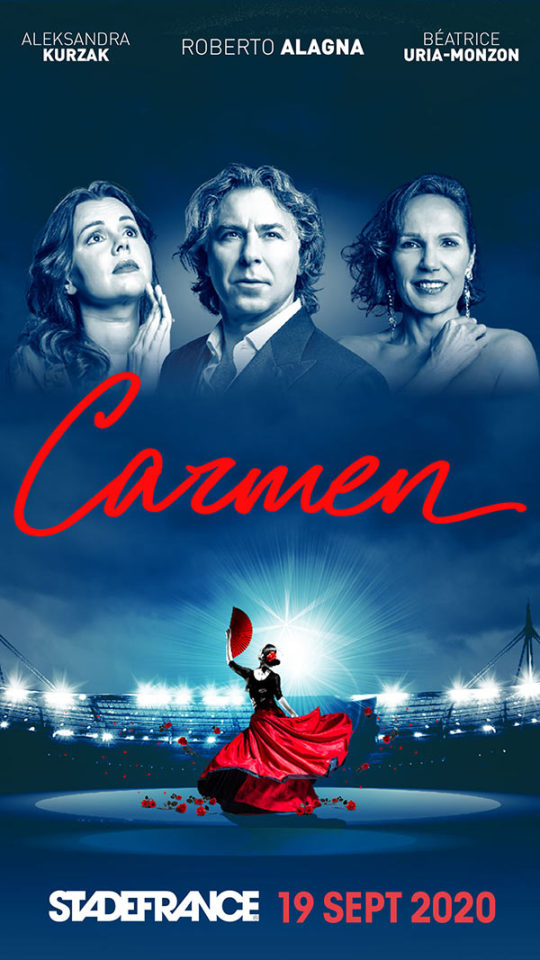
CARMEN, l’opéra français le plus joué dans le monde, revient au Stade de France, le 19 septembre 2020, dans une mise en scène exceptionnelle de Charles Roubaud.
Un opéra porté par une distribution prestigieuse : Roberto Alagna, Béatrice Uria-Monzon, Aleksandra Kurzak… accompagnés par l’Orchestre national d’Ile-de-France, le Chœur Unikanti et la Maîtrise des Hauts-de-Seine, placés sous la direction de Giorgio Croci.
CARMEN au Stade de France, c’est un grand spectacle servi par 300 artistes sur scène, des costumes et décors grandioses et une mise en lumières digne des plus grands shows.
Infos et réservations : https://www.stadefrance.com/fr/billetterie/opera-carmen
0 notes
Text
Le Nouveau Monde antilyrique de Charles Reznikoff, par Patrice Beray

Connue surtout pour ses grands poèmes testimoniaux (Témoignage, Holocauste…), l’œuvre de Charles Reznikoff (1894-1976) a pu passer pour une anomalie, son dessein antilyrique échappant pour une grande part à l’histoire de la poésie. L’édition récente de deux de ses livres de poèmes majeurs (inédits en français) donne la mesure de ce vœu de pauvreté volontaire qui est au cœur de la démarche du poète américain.
« Une poésie humaine pour les êtres humains » qui « dans un autre âge ou une autre société aurait sûrement été appelée “populaire” », a finement fait valoir Denise Levertovà propos de Charles Reznikoff, en se remémorant avec quel élan spontané, naturel, les passagers du métro new-yorkais se pressaient contre ses épaules pour lire l’auteur de By the Waters of Manhattan. Tout circonstanciels qu’ils soient, ces mots de Levertov introduisent parfaitement à l’œuvre de ce fils de Juifs russes contraints de fuir les pogroms déclenchés par l’assassinat, en 1881, du tsar Alexandre II.
En effet, dans ce qui sera son unique « roman » (paru en 1929, réédité en 1962), largement inspiré par les récits oraux de sa propre mère, Reznikoff pose la question de son rapport à l’histoire d’Israël qui innerve toute son œuvre poétique, le titre français choisi pour By the Waters of Manhattan – Sur les rives de Manhattan – rendant bien compte de sa vision de New York, ville tant aimée et arpentée par lui, en Babylone transfigurée par l’épreuve de l’exil. Surtout, il met déjà en œuvre dans ce roman la fameuse formule que les poètes dits « objectivistes » retiendront, entre toutes, de leur aîné William Carlos Williams : « No ideas, but in things » (traduit souvent par « Pas d’idées hors des choses »). À savoir que l’agencement, la gradation des incidents puis des événements qui marquent le cours des existences peuvent se suffire à eux-mêmes, excédant toute intention discursive projetée par l’auteur. Ce « mélange littéraire », au goût de Reznikoff, c’est-à-dire dénué de quelque effet stylistique, porte en germe ce qui va devenir au fil des ans une œuvre de témoignage sans pareille, continuée sa vie durant.
Associé dès le début des années 1930 par Louis Zukofsky au mouvement objectiviste naissant avec George Oppen et Carl Rakosi, Charles Reznikoff est alors celui qui répond de la façon la plus radicale à l’injonction du poète de Paterson d’ancrer leur littérature dans la réalité historique et culturelle des États-Unis. Ce faisant, le poète va instruire un véritable procès du lyrisme. Les deux recueils de poésie jusqu’alors inédits en français, traduits de l’américain par Thierry Gillybœuf et publiés aux éditions Nous sous le titre Inscriptions (ce livre de 1959 étant précédé de Çà et là, de 1941), permettent d’en prendre la pleine mesure, non sans un détour préalable par l’œuvre qui a fait la renommée (tardive) de Reznikoff : Testimony (Témoignage – Les États-Unis 1885-1915 – Récitatif), une « poétique du témoignage » (l’expression est de Fiona MacMahon, spécialiste de l’auteur) qu’il prolongera avec Holocauste.
Diplômé en droit, Reznikoff met ainsi à profit son travail au début des années 1930 pour une encyclopédie juridique et constitue à partir des archives fédérales et de chaque État une histoire inédite de la nation étasunienne au tournant des XIXe et XXe siècles, « non pas, a-t-il précisé, du point de vue de l’individu, comme dans les journaux intimes, ni simplement sous l’angle de l’inhabituel, comme dans la presse, mais de tous les points de vue – autant de points de vue que de témoins ».
Ce grand livre projeté (Testimony) qui rassemble les chroniques d’un « nouveau monde » issues des tribunaux, dûment datées et situées, fait grand cas du sort des minorités sociale, religieuse, raciale, bouleversant d’autant le grand mythe américain qu’il adopte sur la foi des différents témoignages fidèlement restitués – et savamment répertoriés, découpés, agencés par l’auteur – la part de vraisemblable des traces écrites de l’Histoire. Si Testimony a pu être considéré comme une œuvre inégalable de la « tentative objectiviste » – selon le mot de Jacques Roubaud, son premier traducteur en langue française dans les années 1980 –, c’est bien parce que l’ouvrage se donne à lire comme un grand poème, Reznikoff ayant d’abord envisagé sa composition en prose, puis entièrement refondé en vers son « récitatif » à partir du début des années 1940.
Dans la décennie 1960 – au moment où Denise Levertov redécouvre By the Waters of Manhattan –, l’objectivisme finit par susciter quelque intérêt dans les lettres américaines, surtout grâce au nouveau rayonnement de George Oppen. Reznikoff a alors accompli l’essentiel de son œuvre poétique. Son recueil Going To and Fro and Walking Up and Down (paru en 1941), titre que Thierry Gillybœuf a condensé en Çà et là, peut être considéré comme sa plus importante réalisation, que vient compléter (dix-huit ans plus tard, sans aucune publication dans l’intervalle…) le volume Inscriptions.
« Mais le monde […] volera en éclats pour nous – rien que pour nous »
Le vertige qui saisit à la lecture de Çà et là tient au rapport au temps qu’y instaure Reznikoff. Dans la première des cinq parties qui composent le recueil, intitulée « Une brève histoire d’Israël », c’est le temps qui fait ployer le poète, et pas seulement de tout le passé d’une inépuisable tradition livresque (de l’Ancien Testament notamment) ; mais aussi sous le coup de ce rapport au temps que l’on inflige aux Juifs d’Europe au moment où il écrit son poème : « leur passé était encore le présent et le présent / celui d’un redoutable futur ». Cette vision d’un présent qui ne peut s’éterniser – sans futur – va hanter toute la poésie de Reznikoff, d’Inscriptions aux œuvres testimoniales qu’il finira d’élaborer. D’ailleurs, dès cette première partie de Çà et là le poète n’y résiste pas et accommode sa « brève histoire d’Israël » à la situation présente de la Seconde Guerre mondiale :
Sur un siège du métro, regardant par la fenêtre les ténèbres bruyantes, pourquoi es-tu triste ? Tu n’es pas un Hébreu : tu n’auras aucun mal à trouver du boulot (même un Hébreu serait content de t’embaucher) […] et pourtant, ni miséreux ni ivre, pourquoi es-tu si malheureux, Aryen ?
Acculé à un présent qui peine à ouvrir sur un Nouveau Monde, Reznikoff réussit malgré tout ce prodige – contre le cours de l’Histoire – d’inventer une écriture du poème qui le devance sur ces chemins obstrués du temps, par lesquels il signe les deux parties suivantes de Çà et là : deux « autobiographies » qui le mènent « En route vers l’Ouest », de New York à Hollywood où son ami cinéaste et producteur Albert Lewin (le réalisateur de Pandora) lui offre ponctuellement de travailler.
Cette invention poétique propre à Reznikoff, passant par une économie de moyens tant louée par les poètes objectivistes, ici admirablement traduit par Thierry Gillybœuf, tient à la répétition (la reprise) des mêmes mots, geste d’écriture qui fait advenir dans toute leur réalité les choses vues, comme ici dans les tout derniers vers faisant immédiatement suite à une série nominale :
Le sol à côté du ballast est du vert vif de l’herbe ; les arbres en bourgeon le long du fleuve boueux chatoient ; dans les creux les arbres au vert feuillage ont bourgeonné. Des palmiers dans les rues d’une ville. Des fleurs pourpres et blanches dans le désert. Du sable blanc formant de lisses vagues. Une plaine de gravier comme de l’eau ridée. Des lumières isolées ; nombreuses ; des lumières le long des routes, le long des rues, et le long des rues de Los Angeles.
Toutefois, comme le souligne très justement Emmanuel Laugier dans sa postface à Inscriptions, « le littéralisme n’est qu’un des aspects » de l’écriture de Reznikoff. Sur ce chemin du poème où le monde d’une collectivité possible se trouve, il n’oublie pas la capacité de chacun d’en intérioriser les rêves et les affects qui ne pourront jamais être dits. Comme dans son poème Kaddish qui clôt le recueil où il ne peut qu’accompagner les derniers souffles de vie de sa mère : « Mais parfois, quand je parle calmement aux autres, / je m’aperçois que je soupire – hors de propos. »
Ainsi, si l’on peut qualifier la poésie de Reznikoff d’antilyrique puisqu’il ne recourt jamais, en quelque circonstance, à la moindre intensification des émotions, le poète n’exclut pas complètement que l’on puisse trouver quelque consolation dans son art. C’est également dans Çà et là qu’ont été publiés ses bouleversants premiers « témoignages » sous une forme versifiée (ils en constituent la 4e partie). À ces chroniques d’une grande violence qui vont composer Testimony, nombre de poèmes d’Inscriptions et de Çà et là font écho, cette fois sous la plume d’un poète que la déréliction d’être partie prenante de ce monde n’empêche pas de manier la dérision, l’humour :
Je n’aurais jamais pensé que je heurterais un poteau, tituberais et aurais l’impression de tomber sous les grosses roues qui filaient sur la chaussée ensoleillée ; mon emploi du temps ne comportait pas d’arrêts.
Mais le monde qui glisse en douceur tout soudain, comme il l’a fait, volera en éclats pour nous – rien que pour nous.
Patrice Beray, Mediapart (17 août 2018)
https://www.mediapart.fr/journal/culture-idees/170818/le-nouveau-monde-antilyrique-de-charles-reznikoff
0 notes
Text
JL à l'écoute de ... Laurent Robert, poète
JL à l’écoute de … Laurent Robert, poète
Des mots pour vous
.
JL à l’écoute de … Aujourd’hui Laurent Robert
.
.
1/ Qui êtes-vous ? Quel est votre parcours ?
Je m’appelle Laurent Robert. Je suis né en 1969, à Chimay, en Belgique. Je suis de nationalité belge.
Après des études de lettres en Belgique, j’ai été en parallèle enseignant et critique littéraire, tout en publiant déjà un premier recueil de poèmes, Protocole du seul, en 1994.…
View On WordPress
#Alphonse Lemerre#art#Association des Écrivains Belges#écriture#Charles Baudelaire#culture#dedicaces#Emile ZOLA#fr#france#Georg Trakl#Georges Fourest#Georges Fourest ou le carnaval de la littérature#Guerres#Guillaume Apollinaire#haïkus#Hubert Dubois#Jack Kerouac#Jacques Roubaud#Jérôme Leroy#Jean-Michel Basquiat#Jean-Paul Dubois#Laurent Robert#Le Bloc#Le Carnet et les Instants#lecture#Liège#livres#Métro Stalingrad#Mons
0 notes
Link
Programmierte Kunst. Frühe Computergraphik
Die Kunsthalle Bremen besitzt weltweit eine der größten Sammlungen der Computergraphik. 2018 nimmt das Museum drei Jubiläen zum Anlass, diese umfangreiche internationale Sammlung in den Mittelpunkt einer Ausstellung zu rücken. Gezeigt wird eine Auswahl computergenerierter Graphiken aus der Bremer Sammlung, die zwischen 1955 und 1979 entstanden sind. Ergänzt wird die Präsentation durch zwei neue Arbeiten Frieder Nakes. Als ein Pionier der Computerkunst hat er die Konzeption der Ausstellung unmittelbar begleitet.
1968 verhalfen zwei Ereignisse, die sich 2018 zum 50. Mal jähren, der Computerkunst zu internationaler Anerkennung: Die Ausstellungen „Cybernetic Serendipity. The Computer and the Arts” in London und anschließend in New York, San Francisco und Washington D.C. sowie „Tendencies 4. Computers and Visual Research“ mit begleitendem Symposium in Zagreb. Als Ergebnisse neuer ästhetischer Formfindungen waren computergenerierte Musik, Choreographien, Texte, Computerfilme und Computergraphik entstanden. 2018 feiert zudem ein Pionier der Computerkunst seinen 80. Geburtstag: Frieder Nake, der zusammen mit Georg Nees und Michael A. Noll zu den Gründungsvätern der digitalen beziehungsweise algorithmischen Computergraphik zählt. 1963 entwickelte er an der Technischen Hochschule Stuttgart ein Zeichenprogramm, das die Koppelung des Institutsrechners (SEL ER65) mit der neu angeschafften, legendären Zeichenmaschine des Computererfinders Konrad Zuse Graphomat (ZUSE Z64) ermöglichte. In der Folge entstanden die ersten Zeichnungen mit ästhetischem Anspruch.
Ein Großteil der Computergraphiken der Kunsthalle Bremen stammt aus der Sammlung Herbert W. Franke und wurde 2006 Dank der generösen Unterstützung durch die Kulturstiftung der Länder und der Ernst von Siemens Kunststiftung von der Kunsthalle Bremen erworben. 2007 fand die erste Ausstellung dieser Werke in der Kunsthalle statt.
In der Ausstellung vertrene Künstlerinnen und Künstler: Walter Heinz Allner, Kurd Alsleben, Wolfgang Bäumer, Manuel Barbadillo, Otto Beckmann, Oskar Beckmann, Christian Cavadia, Harold Cohen, Charles A. Csuri, William A. Fetter, Herbert W. Franke, Roland K. Fuchshuber, Alfred Graßl, Grace C. Hertlein, Jürgen van Kranenbrock, Ruth Leavitt, Kammerer-Luka, Manfred Mohr, Vera Molnar, Frieder Nake, Georg Nees, A. Michael Noll, Cord Passow, Sylvia Roubaud, Helmut Schenk, Ernst Schott, James Shaffer, Gerhard Stickel, Josef Vordermaier, Gerold Weiß
0 notes
Text
Renga / Bir Şiir Zinciri Kitabı pdf indir pdf indir
Renga / Bir Şiir Zinciri Renga Hei (794-1192) ve Muromaçi (XIV. – XV. yüzyıl) dönemleri arasında Japonya’da gelişip yaygınlaşmış bir ortak şiir biçimidir. Bu zincirleme şiirler oldukça sıkı kurallara bağlı olarak yazılırdı. Bu kitaptaki şiirler ise Meksikalı Octavio Paz’ın girişimiyle 1969’da kendisine Fransız Jacque Roubaud, İtalyan Eduardo Sanguineti ve İngiliz Charles Tomlinson’un katılmasıyla Paris’te bir otelin bodrum katında gerçekleştirdikleri bir deneyin ürünleri. Bir uzakdoğu geleneğinden yola çıkarak bu şiir biçimini diriltme ya da en azından batılı eşdeğerini bulma girişimini Yurdakul Kavas, Kaan Özbayrak, Tansu Açık ve Bülent Kandiller Türkçe’ye aktararak şiirseverlere kültürlerarası etkileşimin ilginç örneklerini sunuyorlar.
Renga / Bir Şiir Zinciri Kitabı pdf indir pdf indir oku
#Renga / Bir Şiir Zinciri kitabı pdf indir#Renga / Bir Şiir Zinciri pdf oku#Renga / Bir Şiir Zinciri ücretsiz indir#Renga / Bir Şiir Zinciri ücretsiz pdf indir#Şiir (çeviri)
0 notes
Text

Radical Software: Women, Art & Computing 1960-1991, Mudam Luxembourg – Musée d'Art Moderne Grand-Duc Jean / Kunsthalle Wien / Verlag der Buchhandlung Walther und Franz König, 2024

Artists: Rebecca Allen, Elena Asins, Colette Stuebe Bangert & Charles Jeffries Bangert, Gretchen Bender, Gudrun Bielz & Ruth Schnell, Dara Birnbaum, Inge Borchardt, Barbara Buckner, Doris Chase, Analívia Cordeiro, Betty Danon, Hanne Darboven, Bia Davou, Agnes Denes, VALIE EXPORT, Anna Bella Geiger, Isa Genzken, Dominique Gonzalez-Foerster, Lily Greenham, Samia Halaby, Barbara Hammer, Lynn Hershman Leeson, Grace C. Hertlein, Channa Horwitz, Irma Hünerfauth, Charlotte Johannesson, Alison Knowles, Beryl Korot, Katalin Ladik, Ruth Leavitt, Liliane Lijn, Vera Molnár, Monique Nahas & Hervé Huitric, Katherine Nash, Sonya Rapoport, Deborah Remington, Sylvia Roubaud, Miriam Schapiro, Lillian Schwartz, Sonia Sheridan, Nina Sobell, Barbara T. Smith, Tamiko Thiel, Rosemarie Trockel, Joan Truckenbrod, Anne-Mie Van Kerckhoven, Ulla Wiggen
Contributors: Laura Amann, Sarah Beaumont, Michelle Cotton, Rhea Dall, Ramona Heinlein, Hannah Marynissen, Astrid Peterle, Carlotta Pierleoni, Andrea Popelka, Clémentine Proby, Tina Rivers Ryan, Margit Rosen, Jade Saber, Bettina Steinbrügge
Graphic Design: A Practice For Everyday Life
Exhibitions: Mudam Luxembourg – Musée d'Art Moderne Grand-Duc Jean, September 20, 2024 – February 2, 2025; Kunsthalle Wien, Wien, February 28 – May 25, 2025
Curators: Michelle Cotton, assisted by Sarah Beaumont
#graphic design#art#computer art#computer drawing#computer technology#exhibition#catalogue#catalog#cover#michelle cotton#sarah beaumont#a practice for everyday life#mudam luxembourg#musée d'art moderne grand duc jean#kunsthalle wien#verlag der buchhandlung walther und franz könig#2020s
38 notes
·
View notes
Photo

Selon Éric Dussert, avec Démons & Déments “Louis Roubaud s'impose sur les traces de Charles Dickens, de Paul Alexis ou d'Edouard Texcier qui avaient visité en leurs temps ces lieux de désespérance”.
Un très bel article sur Louis Roubaud à lire dans Le matricule des anges de mars !
0 notes
Text
Una representació d’òpera és o hauria de ser quelcom més que pujar d’alt d’un escenari una sèrie de cantants i un cor, i anar cantant amb més o menys encert allò escrit a la partitura, fins i tot sense interpretar gaire, llegint i en prou feines, perquè en aquesta ocasió hi ha qui llegeix malament.
Roberto Alagna forma part del comissionat del Festival d’Orange i potser per això és reserva cada estiu la seva participació activa en el festival, fa bé, el públic l’adora, però darrerament escull malament les òperes que hi canta, fa tres estius un mal preparat Calaf, l’estiu passat un horrorós Otello verdià i aquest estiu un Manrico tardà, segurament poc assajat i amb un esgotament vocal que sent com és un rol que s’adapta o adaptava bastant bé a la seva vocalitat (magnífic fa uns anys a la ONP), en aquesta ocasió ha mal cantat de manera grollera.
Potser a ell tant li fa, no és gaire rigorós en aquest aspecte i al seu públic molt menys, de fet rep una ovació com si el públic assistent hagués acabat d’escoltar a Tucker o Corelli i òbviament no és el cas, però com que la resta del més que discret repartiment també són saludats i victorejats com si es tractes de Leontyne Price i Giulietta Simionato, podríem dir que l’exigència del públic no és la seva principal característica.
Bertrand de Billy dirigeix l’excel·lent Orchestre National de France amb més bon ofici que autoritat, deixant que siguin els cantants qui acabin manant i desenquadrant els tempos i intencions del director musical.
Deficient, com acostuma a passar, la suma de diferents cors que o bé per una presa de so poc definida i mal dissenyada, o per una manca de qualitat vocal d’algunes veus, especialment les masculines, ofereixen una prestació molt provinciana.
Alagna canta amb l’entrega i passió que el caracteritza, és comunicatiu i arrossega una vetllada que recau sobre les seves esquenes, però el cant és poc curós, l’emissió molt forçada i la línia poc elegant, és un Manrico cansat i esgotat quan arriba a una “pira” molt poc heroica. Molts Manrico canten una discreta cabaletta per motius més psicològics que veritablement vocals, però en canvi canten la resta de l’òpera amb autoritat, però Alagna sembla que des de la seva entrada fora d’escenari a la segona escena de l’òpera, estigui preocupat per la seva escena del tercer acte. M’agradava molt aquell Manrico de l’Òpera de Paris, jove i impetuós, d’insolència personalitat lírica, però molt més acurat al cant verdià, amb una emissió més canònica i un estil molt més elegant.
Hui He és una gran veu per a Leonora, però comunica poc i desafina molt. Fa coses boniques, si bé al darrera no hi ha gaire calat dramàtic, més aviat és un cúmul de virtuts tècniques quan és acurada, però també és una suma de calades i desafinades en una nit molt poc afortunada.
George Petean és l’únic que s’ajusta amb veu i estil al rol de Conte de Luna, no té unes grans aptituds dramàtiques sobre l’escenari, però el seu cant és bo i la veu també, és plena, bonica i verdiana, amb això vull dir que s’ajusta bé a les frases amples i llargues, sempre nobles, no fa de dolent, canta amb gust i amb molta convicció.
La contralt canadenca Marie-Nicole Lemieux ja va ser Azucena l’estiu passat en aquell Trovatore salzburguès de trista memòria. En aquesta nova incursió no millora la impressió causada l’any passat. Sí normalment la uniformitat de registre de la cantant és una de les virtuts del seu noble cant, aquí una altra vegada ha de forçar la veu per intentar arribar amb una certa autoritat a les tres zones on ha de mostrar rotunditat dramàtica, però el resultat no és prou bo, ans el contrari és decebedor malgrat la voluntat que posa per ser convincent.
Nicolas Testé és un baix baríton que canta amb correcció una part que acostuma a no tenir el gran cantant que necessita.
La producció de Charles Roubaud és buida, amb pretensions de ser alguna cosa i que sembla voler ambientar-se en la Guerra Civil espanyola, però que tret dels crèdits inicials, amb cartell i pintades que en fan referència, res fa intuir que sigui així quan veiem l’òpera, amb un vestuari que es fa difícil ubicar en una època concreta si ens atenem als vestits de Leonora, o als uniformes indefinits de la soldadesca. Només unes projeccions espectaculars que en alguns casos s’adapten bé amb les pedres naturals del Teatre Romà, donen una certa presencia al no res.
Moviment escènic inexistent o molt complicat quan es tracta de fer moure els personatges i el cor en un espai tan gran i tan buit, o coreografies ridícules no ajuden gens a crear una mínima dramatúrgia i tot acaba apropant-se a aquella mítica dels germans Marx, amb personatges que deambulen fent gests grandiloqüents per fer-se notar en l’immens escenari de les Chorégies d’Orange, un escenari que quan no hi ha idees, esdevé un escull insalvable per a una òpera necessitada de idees, si, però sobretot de veus idònies, i ni en un cas ni en l’altre es compleix.
Giuseppe Verdi IL TROVATORE
Hui He, Leonora Marie-Nicole Lemieux, Azucena Ludivine Gombert, Inès Roberto Alagna, Manrico George Petean, Il Conte de Luna Nicolas Testé, Ferrando Julien Dran, Ruiz
Orchestre National de France Chœurs des Opéras Grand Avignon, de Nice et de Toulon Provence-Méditerranée Direcció musical: Bertrand de Billy
Direcció d’escena: Charles Roubaud Escenografia: Dominique Lebourges Disseny de vestuari: Katia Duflot Imatges: Jacques Rouveyrollis
Théâtre Antique National, Chorégies d’Orange 4 d’agost de 2015
Enllaç vídeo
https://mega.co.nz/#F!PkV2EJpZ!pvPMsIdRP8PQX-QlgNbV0g
Malgrat tot aquesta representació estic segur que farà les delícies d’alguns de vosaltres i per tant aquí la teniu.
Jo vull dedicar l’apunt especialment a Lucia i Marta, perquè sé que elles malgrat tot l’esperaven amb ànsia, com sempre que hi ha una actuació d’Alagna a l’abast.
Goditela!
ORANGE 2015: IL TROVATORE (Alagna-He-Lemieux-Petean-Testé;Roubaud-de Billy) Una representació d'òpera és o hauria de ser quelcom més que pujar d'alt d'un escenari una sèrie de cantants i un cor, i anar cantant amb més o menys encert allò escrit a la partitura, fins i tot sense interpretar gaire, llegint i en prou feines, perquè en aquesta ocasió hi ha qui llegeix malament.
#Bertrand de Billy#Charles Roubaud#George Petean#Giuseppe Verdi#Hui He#Il Trovatore#Julien Dran#Ludivine Gombert#Marie-Nicole Lemieux#Nicolás Testé#Orange#Roberto Alagna
0 notes
Text
LE CID de Jules MASSENET au Palais Garnier avec Roberto Alagna
LE CID de Jules MASSENET au Palais Garnier avec Roberto Alagna
Cent ans plus tard, retour du Cid à Garnier avec Robert Alagna dans le rôle titre.
Tout le monde connaît Le Cid, dans la version de Pierre Corneille, mais peu connaissent l’Opéra de Massenet, même si on retrouve certains vers de Corneille, comme “Ô Rage, Ô désespoir…..”, ou “Rodrigue as tu du coeur….” pour ne citer que les deux plus connus. L’Opéra fut créé en novembre 1885, sur un livret…
View On WordPress
#Adolphe ennery#Agathe poupeney#Annick Massis#Charles Roubaud#Edouard Blau#Guy Courthéoux#Jules Massenet#Laurent Alvaro#Louis Gallet#Michel Plasson#Nicolas Cavalier#Opéra Garnier#Paul Gay#Pierre Corneille#Placido Domingo#Roberto Alagna#Sonia Ganassi
0 notes
Photo
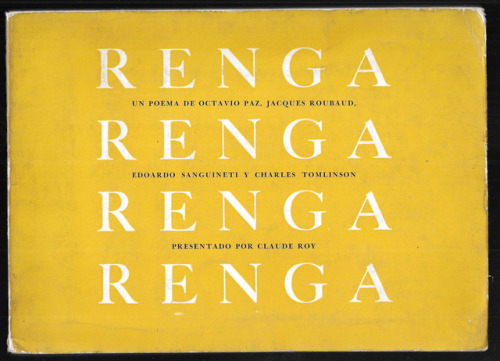
Octavio Paz, Jacques Roubaud, Edoardo Sanguinetti, and Charles... http://ift.tt/2Fb94vF
5 notes
·
View notes
Text
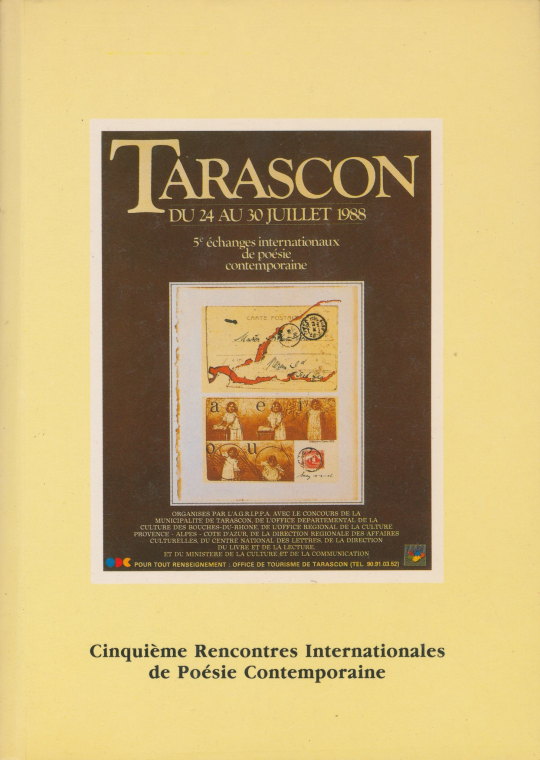
Festival de Tarascon – Cinquième Recontres Internationales de Poésie Contemporaine, Edited by Thérèse Aillaud, Julien Blaine, Jack Lang, Association générale des rencontres internationales en Provence de poésie d'aujourd'hui, Le Revest, 1989 [room 3o2 books, Ottawa]
Contributors: Thérèse Aillaud, Bruce Andrews, Eric Audinet, Rafael Barreto-Rivera, Franco Beltrametti, Charles Bernstein, Julien Blaine, Jaap Blonk, Marie Borel, Gérard-Philippe Broutin, Olivier Cadiot, Didier Cahen, Françoise Canal, Jean-Yves Cousseau, Françoise De Larocque, Henri Deluy, Ma Desheng, Noël Dutrait, Paul Dutton, György Galántai, John Giorno, Joseph Guglielmi, Bernard Heidsieck, Lyn Hejinian, Susan Howe, Edmond Jabès, R. József Juhász, Mang Ke, Jack Lang, Pierre Lartigue, Joëlle Leandre, "Mars", bpNichol, Tibor Papp, András Petöcz, François Poyet, Tom Raworth, Christian Rivot, Linda Charyk Rosenfeld, Jacques Roubaud, Sarenco, Gerry Shikatani, Akos Szekely, Rosemarie Waldrop, Jim Wedderburn
#graphic design#art#poetry#concrete poetry#visual poetry#sound poetry#festival#catalogue#catalog#book#cover#book cover#festival de tarascon#thérèse aillaud#julien blaine#jack lang#association générale des rencontres internationales en provence de poésie d'aujourd'hui#room 3o2 books#1980s
9 notes
·
View notes